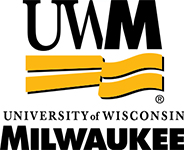Induced pluripotent stem cells from a spinal muscular atrophy patient. Nature 2009 Jan 15;457(7227):277-80
Date
12/23/2008Pubmed ID
19098894Pubmed Central ID
PMC2659408DOI
10.1038/nature07677Scopus ID
2-s2.0-58249110796 (requires institutional sign-in at Scopus site) 1263 CitationsAbstract
Spinal muscular atrophy is one of the most common inherited forms of neurological disease leading to infant mortality. Patients have selective loss of lower motor neurons resulting in muscle weakness, paralysis and often death. Although patient fibroblasts have been used extensively to study spinal muscular atrophy, motor neurons have a unique anatomy and physiology which may underlie their vulnerability to the disease process. Here we report the generation of induced pluripotent stem cells from skin fibroblast samples taken from a child with spinal muscular atrophy. These cells expanded robustly in culture, maintained the disease genotype and generated motor neurons that showed selective deficits compared to those derived from the child's unaffected mother. This is the first study to show that human induced pluripotent stem cells can be used to model the specific pathology seen in a genetically inherited disease. As such, it represents a promising resource to study disease mechanisms, screen new drug compounds and develop new therapies.
Author List
Ebert AD, Yu J, Rose FF Jr, Mattis VB, Lorson CL, Thomson JA, Svendsen CNAuthor
Allison D. Ebert PhD Center Director, Professor in the Cell Biology, Neurobiology and Anatomy department at Medical College of WisconsinMESH terms used to index this publication - Major topics in bold
Cell DifferentiationCell Lineage
Cell Separation
Cells, Cultured
Cellular Reprogramming
Child
Female
Fibroblasts
Gene Expression Regulation
Humans
Male
Models, Biological
Motor Neurons
Muscular Atrophy, Spinal
Pluripotent Stem Cells
Skin
Survival of Motor Neuron 1 Protein









